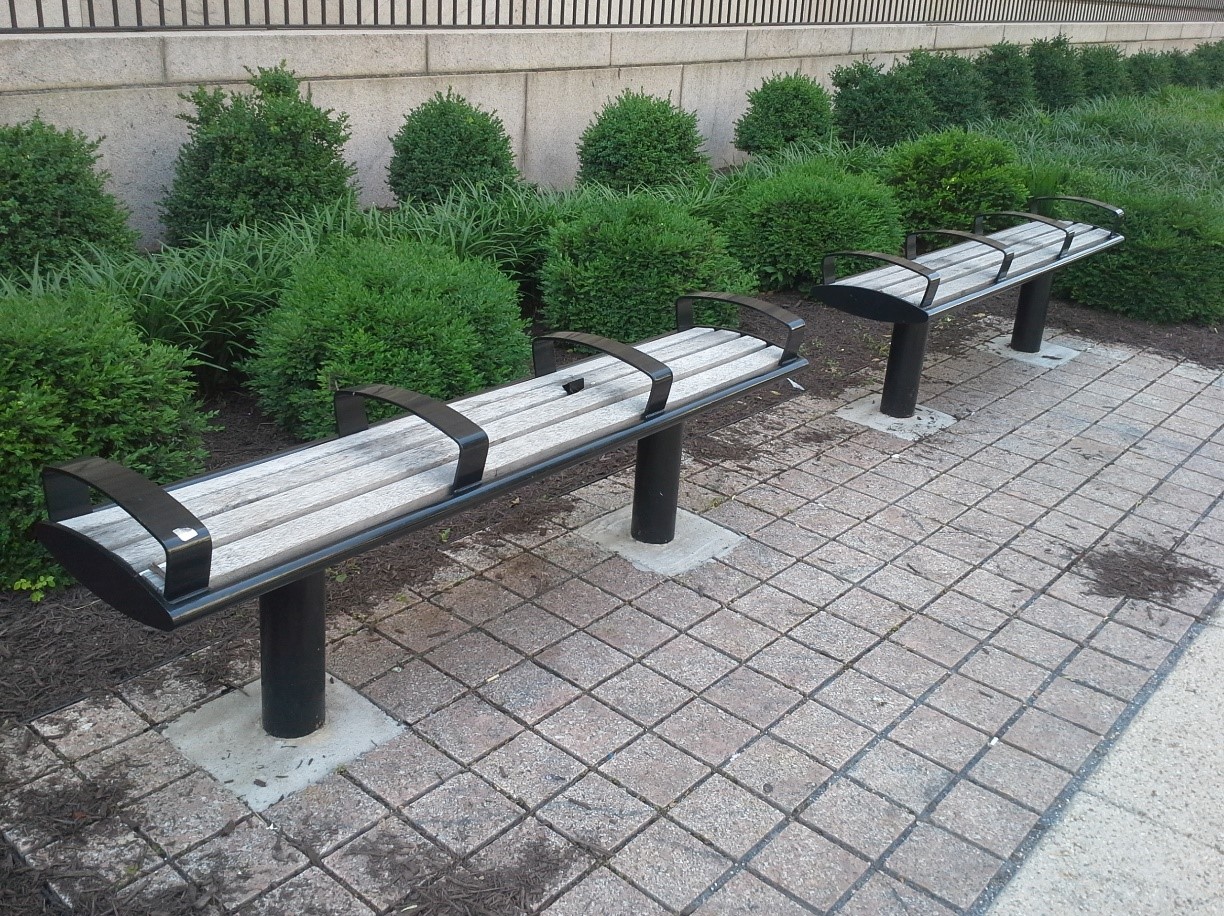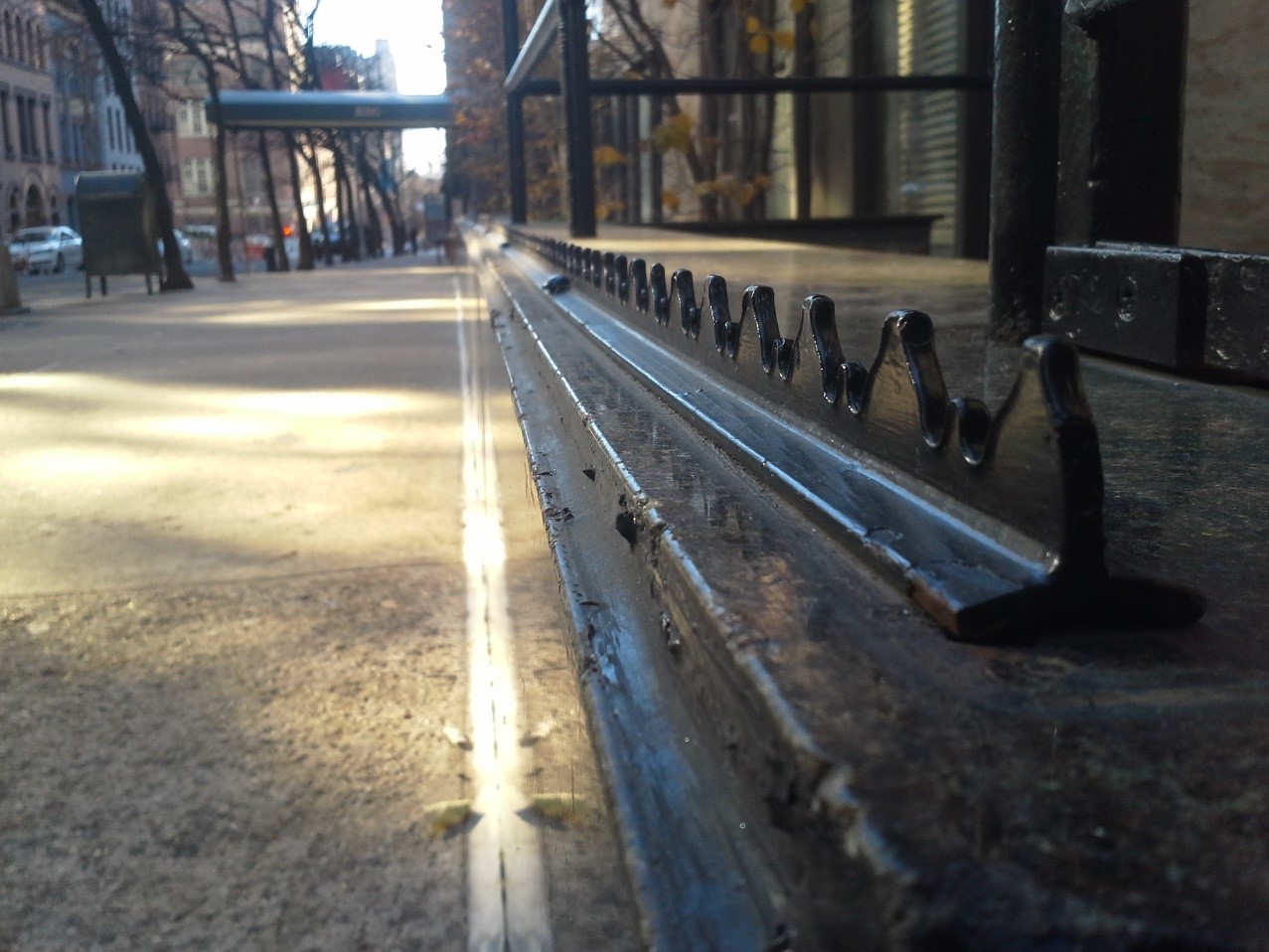What is “hostile design,” and how should we study it?
Blog by Robert Rosenberger
- Created
- 19 Aug 2019, 1:56 p.m.
- Author
- Robert Rosenberger
- DOI
- 10.1177/0042098019853778
Abstract: https://journals.sagepub.com/doi/full/10.1177/0042098019853778#abstract
In order to deter homeless people from camping under a particular overpass in Seattle, the city’s Department of Transportation installed eighteen bicycle racks in that space. The racks consisted of simple metal arches protruding from the ground. In addition to providing a place to lock up one’s bike, they made it difficult to set up camp. However, they were soon removed after gaining negative media attention.
The Seattle underpass bike racks are an especially clever example of a contemporary—and possibly increasingly widespread—urban phenomenon that could be called “hostile design.” This refers to an object in public space that functions to deter certain behaviors and that has come under criticism (or should come under criticism) for this function, especially when this function allegedly targets an already vulnerable population. The underpass bike racks join a long list of much more common examples, just a few of which include: “skatestoppers,” i.e., those small metal nubs attached to a ledge to deter skateboarding; armrests or seat dividers added to a bench to deter its use as a bed; noise machines that make a space unappealing to loiterers; trash bin lids that deter picking; spikes set into a ledge to deter sitting; and locks installed on fire hydrants to prevent unauthorized access to those looking for relief from hot weather.
Benches with armrest dividers in Washington DC, USA. (Photo by author)
In this critical commentary, I refine the notion of “hostile design,” review the major examples, and suggest directions for empirical research. While most of the examples are very simple objects (often just bumps or nubs or fences or dividers), the idea is complex and fraught. The act of pointing something out to be an instance of hostile design is no mere empirical observation. It’s an accusation. It is a claim that something should be regarded with suspicion, or perhaps even contempt. And it opens up many questions. What populations of a city should count as vulnerable ones? What functions of objects, if any, should we consider hostile? How do instances of hostile design at times work in accord with larger hostile agendas targeting particular populations enacted through laws, regulations, and extensive patterns of design? Who notices these designs as they walk thought the city, and who does not, and why?
Row of wrought iron spikes on ledge in New York City, USA. (Photo by author)
This topic has been generating more and more attention in recent years, especially in online journalism and blogging. Academic research is just beginning to catch up, with a few papers strewn across the journals of multiple disciplines. What I’m calling hostile design also is referred to by many other names, including “hostile architecture,” “architectural exclusion,” “unpleasant design,” and “defensive architecture.” I hope this critical commentary brings attention to this work, and helps to convince researchers that this is a topic ripe for empirical study.
Read the article On hostile design: Theoretical and empirical prospects on Urban Studies - Online First.




Comments
You need to be logged in to make a comment. Please Login or Register
There are no comments on this resource.